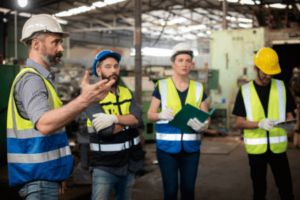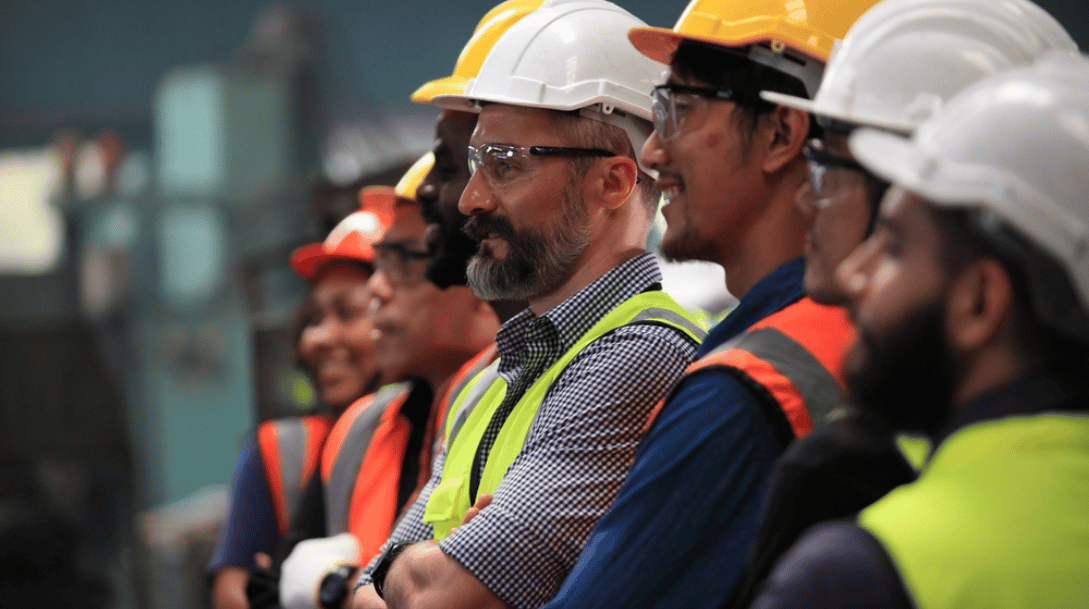The construction industry accounts for roughly 20% of all workplace deaths, which is why the Occupational Safety and Health Administration (OSHA) standards regarding construction safety are crucial. While employers should provide a working environment inherently free of hazards, employee training is also necessary for creating safe workplaces. However, while OSHA requires the proper training of workers, not all training regimens are the same. Construction workers need general safety training, and roles with greater responsibilities often require more specialized instruction. Consider the following in-depth construction safety training guide to help cut past the potential confusion.
Table of Contents
Introduction to Construction Safety Training

Even if an employer provides the safest modern tools and machines, they can still be extremely dangerous when used improperly, and construction environments are also inherently treacherous. There is a myriad of risks involved, the majority of which involve OSHA’s so-called “Fatal Four” factors:
- Falls
- Electrocutions
- Being struck by an object
- Getting caught in or between objects
These four categories of hazards alone are responsible for nearly 600 construction deaths yearly, making construction safety training essential for reducing injuries and fatalities at construction sites.
The Importance of Safety Training in Construction
OSHA training requirements for construction workers can save lives if workplaces follow them, and employers are responsible for implementing training programs that adhere to OSHA standards. These training programs are statistically proven to prevent workplace accidents, and though they do require time and money to execute, they are far cheaper than handling worker’s comp claims, fines and penalties for non-compliance, and losing employees to injuries and fatalities.
The Role of OSHA in Construction Safety
OSHA is responsible for enacting and enforcing safety regulations for US workers in the construction industry. It regulates businesses, ensuring workers have the proper equipment and sufficient training to perform their jobs effectively in a safe environment. Whistleblowers, or employees who report safety violations, also receive protection under OSHA statutes.
To ensure workplaces comply, OSHA performs regular inspections. If the inspectors discover violations, OSHA can impose penalties upon employers or even shut down their businesses.
Delving into the Types of Safety Training in Construction
You might have encountered OSHA 10 and 30, the organization’s 10 and 30-hour safety courses, and wondered what the difference is. Let’s explore them both in more detail:
General Safety Training (10-hour Safety Course)
General safety training comprises a 10-hour safety course intended as an all-around course for most construction workers who will not be in positions of supervisory obligations. The course covers the safety and health hazards that all employees are most likely to encounter and how to prevent associated injuries.
Specialized Safety Training (30-hour Safety Course)
Specialized training involves a 30-hour course for supervisors and workers responsible for others’ safety and health and who thus need more in-depth and industry-specific instruction. Those entering the 30-hour course may need information on niches within construction, such as welding, concrete and masonry, and asbestos removal, among others.
OSHA Training Requirements for Construction
Once an individual completes an OSHA course, they’ll receive a completion card, which some states or employers require workers to present as proof of their training. The employer is responsible for providing any additional training needed.
Mandatory OSHA Training for Construction Workers
The OSHA 10 course for all construction workers must detail the following:
- An Intro to OSHA
- The Fatal Four
- Personal Protective Equipment (PPE) and other lifesaving gear
- Health Hazards for construction workers
Many training course providers will incorporate additional topics, such as power tools, excavations, materials handling, cranes, and ladders. These are not requirements from OSHA but may be necessary for specific workplaces.
Additional OSHA Training for Specialized Roles
OSHA 30 courses offer more in-depth coverage of the topics covered by OSHA 10, alongside an entirely new topic; Managing Safety and Health. As OSHA 30 training is intended for supervisors, many training courses under the OSHA 30 umbrella will include additional topics related to workers’ safety, such as ergonomics, confined spaces, safety and health programs, and asbestos exposure.
A Step-by-Step Approach
Creating a safety program using construction site safety best practices is necessary for achieving OSHA compliance, and the organization’s four pillars of Health and Safety Compliance, which are as follows, are an excellent place to start:
1. Management, Leadership, and Employee Involvement
Everyone in the company is responsible for each other’s safety. Employees and employers alike must hold each other accountable to ensure the company remains committed to safety.
2. Worksite Analysis
Collect data on your worksite’s safety and health hazards and develop solutions for eliminating these hazards.
3. Hazard Prevention and Control
Enact specific procedures and actions to address the dangers identified in the previous step, such as purchasing safer machines or upgrading PPE.
4. Training
Ensure all employees understand the set safety procedures and have the tools to follow them.
Identifying Your Training Needs

Selecting the Right Types of Safety Training in Construction
As many reputable websites provide OSHA training, workers can search for specific courses that reflect their needs. Perhaps they need more training in electrical systems, or maybe they’ll be working in areas that can expose employees to asbestos. Whatever the requirement, there’s a course that fits.
Ensuring Compliance with OSHA Training Requirements for Construction
Only authorized trainers are allowed to administer OSHA training, and OSHA keeps an updated, public list of these trainers on its website. Individual employers and states will determine whether they require 10 or 30-hour training, but OSHA will still inspect businesses for any safety violations. Since penalties can cost thousands of dollars, companies usually play it safe and require training.
Your Path to a Safer Construction Site
Construction safety has advanced significantly since the Occupational Safety and Hazard Act of 1970, but there is still much room for improvement. You can reduce the risk of injury or death in your workplace by reviewing the above construction safety training guide and providing safety training courses at your construction site.
If you’re having trouble identifying which courses are right for you and your workers, AOTC provides compliance training to ensure everyone on your worksite performs their duties safely.
